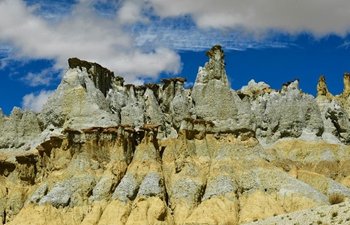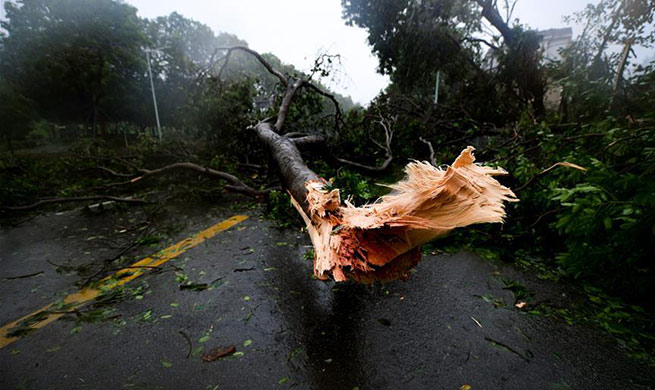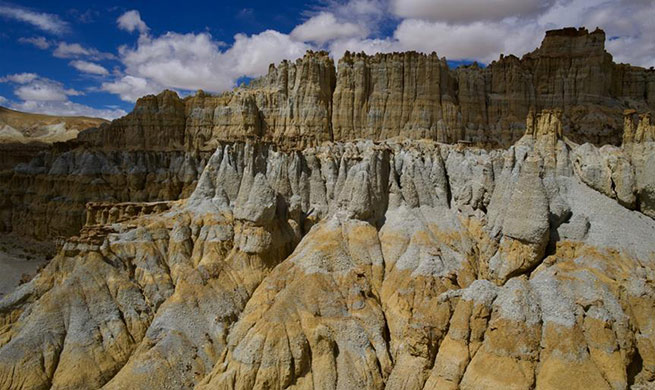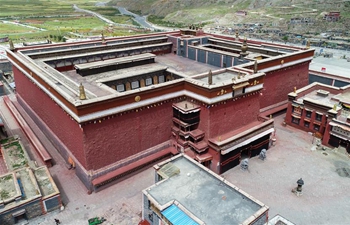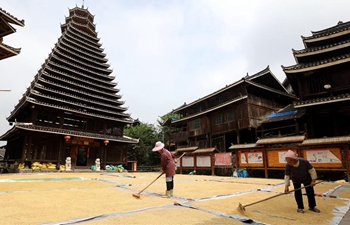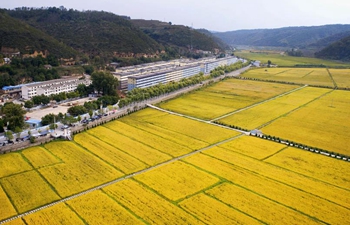ROME, Sept. 16 (Xinhua) -- The growth rings in tree trunks are synchronized on a planetary level, according to recent findings by scientists at Italy's National Research Council (CNR) and Padua University.
Thanks to a four-year study named COSMIC, the scientists said they now have a precise method for dating past atmospheric events that occurred on a global scale, and can equip themselves in case they repeat in the future.
"Year after year, plants record everything that happens on the planet," researcher Mauro Bernabei from the CNR Institute of Tree and Timber (IVALSA) told Xinhua.
"We discovered that there are no holes in this chronological sequence."
Bernabei and a team of international scientists found that the growth rings in trees from 27 species across five continents "recorded" two solar storms -- explosions on the surface of the Sun -- that occurred in the years 774 AD and 993 AD, causing radiocarbon levels to jump by as much as 20 times above the norm.
Each growth ring in a trunk marks a complete cycle of seasons, "recording" the atmospheric conditions that exist in each year of the tree's life.
"We got the idea for this study in 2012, when our colleagues in Japan discovered a radiocarbon peak in the rings of the Japanese red cedar (Cryptomeria japonica), and dated it to 774 AD," Bernabei explained.
"We wondered if trees on other continents or hemispheres had recorded the same event -- and they had."
The implications of this discovery, said Bernabei, is that for the first time people know that dendrochronology -- or tree-ring dating -- is an exact science, and can be applied all over the world.
For example, Bernabei said, in Italy's northern Trentino region where he works, trees live up to 200 years.
By analyzing the rings in living trees as well as timber from castles, churches, archeological digs, and subfossils, "we have built a chronology stretching 11,500 years into the past", he said.
The COSMIC discovery confirms that the two solar storms were global events, meaning people now have a universal precision dating model that takes entire continents and hemispheres into account.
"It constitutes a precious resource for climate and environmental research across different disciplines," explained Padua University Professor Marco Carrer, a forest ecologist with an interest in the connections between tree physiology and climatology who also took part in COSMIC.
Bernabei added that "now we know what we could face in the future" in terms of solar storms, whose side effects include radio and power blackouts, GPS navigation errors, damage to satellites, and the disabling of all electrical devices.
The last time this happened was in July 2012, when the Earth narrowly missed the fallout from what U.S. space agency NASA called "an extreme solar storm".
The COSMIC study involved a team of 67 researchers in 57 scientific institutes around the world, in what was the most extensive collaborative effort made so far by dendrochronologists.
Their findings were published on Nature Communications scientific journal on Sept. 6.
